|
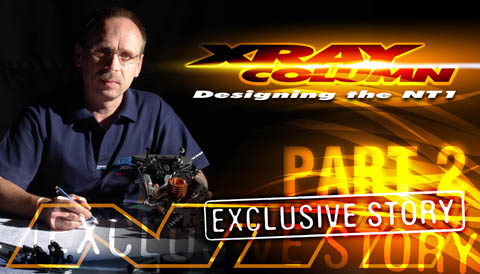
(click to enlarge) |
|
|
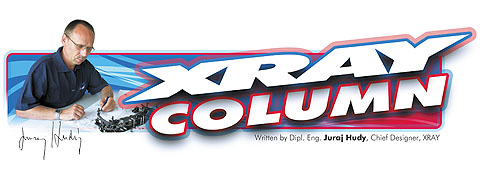
|
|
|
|
After the initial design of the car is finished, usually one of the longest periods in the overall process of producing a new car is the time between testing the first prototype cars until the last pre-production version is finished. This was the same case with the NT1. After we successfully finished the design stage we started to partially test the first prototype cars; these cars featured mostly parts specially manufactured using a special âśfast prototypingâť technique to give an idea about the look and fit. These prototype parts would not do for providing any accurate performance feedback. As soon as the first moulds were finished, the original moulded parts (which were then injected) were exchanged with the prototype parts on the car, allowing us to do enhanced testing of the real parts. To be able to do some serious testing, of course, we had to adjust the schedule and to work first of all on the moulds for suspension parts (the most critical parts) and then start the first real testing.
Having the first real parts from the moulds allowed us to perform several smaller tests. Having long-term experience with nitro on-road cars, I was confident to do the first initial tests on my own together with Martin who as a top driver has good feelings about handling of a car. We divided the responsibility and tasks very easily â“ Martin would test the different parts to experience what influence they would have on the handling and performance. I still can feel the handling differences and have a good feel for testing and comparing, but my concentration cannot be compared to the young drivers â” so my part in the testing was of course to do also the crash tests :-) and to test all the different parts to doubly ensure their reliability and to try to find any weak areas. |
|
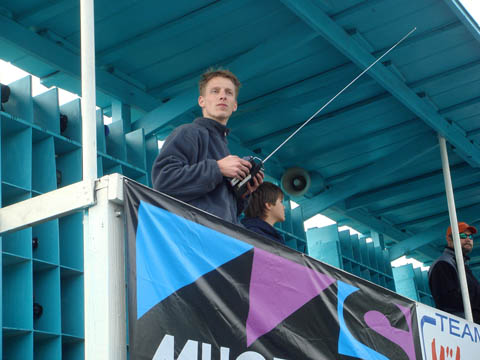
Jilles was the star and hero of the 2007 US Winternats
(click to enlarge) |
|
|
|
For several months we were deeply involved in testing, analyzing, comparing and evaluating. I really enjoyed this part of the project as it allowed me to get a bit out of the daily grind of production issues and other issues here and there, and let me spend some portion of my day on the track to relax and enjoy the testing and racing. To me, the smell of nitro is like the smell of coffee to others... exhilarating. Once again it felt like the âśgood old daysâť filled with the passion and excitement of racing. However, nothing in the real world is ever only positive, so of course besides the pleasure we again got involved with the issues we had to face and resolve. Some of the issues were only minor ones that were easily solved, however some were fairly serious which involved the complete rebuilding of several parts.
Here is a glimpse into a very small portion of the hundreds of small details and issues we had to go through:
⢠The first real problem we faced was the rear arm. I do not know if we simply were having a bad day when designing the arm but once I saw the real arm injected from the mould, right away I had a bad feeling about some weak areas. After several runs my suspicions came true, as during a medium-hard crash the rear arm broke. Since the whole mould for suspension arms was already finished I was really not happy that we would have to make a completely new mould; the current mould could not be used for the completely new design of the arm I had in mind. Of course this would not only mean that the whole project will again get more expensive (since another completely new mould would have to be made) but this also meant another delay. On the positive side, this issue mirrored our recent experience with different T2 arms designs, so I knew exactly where the problem area was on the original NT1 arms and therefore I had very clear idea of how to make a new better design. |
|
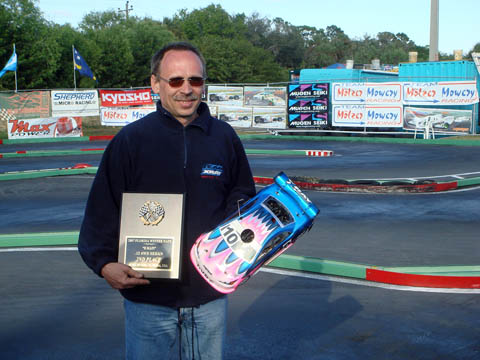
Juraj Hudy taking the second position in B final
(click to enlarge) |
|
|
|
⢠Tests showed that the car did not have sufficient traction out of the corners but rather had a lot of steering which needed to be reduced to gain more traction. The tests have also shown that roll center positions were not optimal and would require different positions. With the new arm design on schedule I reworked not only the shape and profile of the arm (to allow more energy absorption) but we also modified the mounting positions to change the geometry. After gaining the experience and after we collected the data from the current suspension, we easily imported the data back into to the 3D computer program. Now we could work with real data and modify the suspension geometry in virtual reality, getting output that should be almost identical to actual reality. This allowed us to test different suspension geometry as well analyze strength after we added the material in weak areas; as it ended up we had to remove material from some other areas. I am really happy that in these modern times we have these tools that enable us to âśtestâť in virtual reality which saves so much time and resources. Back in the âśold daysâť anytime I wanted to test some new suspension there was nothing we could do but go through the whole process and produce the arms. With all these modern technologies, sometimes I feel like there will be no people needed to produce the ultimate car, but then I realize that it is still the people who have to input all the parameters and understand and feel the results.
⢠With the new geometry on the suspension arms, the geometry of the steering blocks and rear uprights had to be modified too, which again required modifications to the moulds. With the changed geometry the roll center positions on the rear roll center bridge also had to be modified so after testing several different roll center positions we came up with the optimal positions. After finalizing the optimum suspension geometry points, we determined the final shock towers with optimal shock positions (after testing dozens of different shock tower configurations). |
|
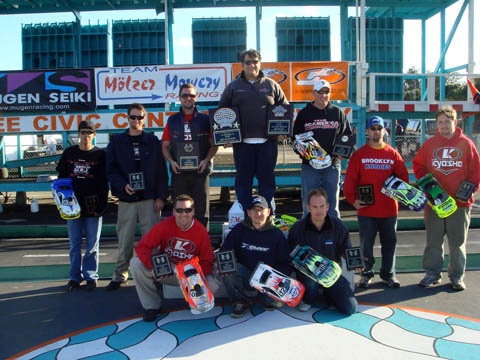
A main finalists
(click to enlarge) |
|
|
|
⢠The original design featured the rear shocks mounted to the rear of the rear shock tower. However, during several crashes from the rear the shocks broke so we decided to mount the shocks to the front of the rear shock tower. As we already were forced to design a new rear arm, we could change also the design of the arm to allow the shocks to be mounted to the front of the rear shock tower.
⢠With the new suspension geometry the handling of the NT1 got much better but we were still not completely satisfied with the balance of the car. The new arms improved the traction but still the traction was not to our liking so we have reworked the balance of the car and moved the engine more to the back. This significantly improved the traction while at the same time it made the car easier to handle and drive. I was now satisfied with the balance and the improved handling but with the move of the engine it was now not possible to easily remove the engine because the belt tensioner was now in the way, so we had to redesign that, too.
⢠With the modified and improved balance the rear bulkheads were elongated, and as the engine had moved more backwards the 2-speed system had to be moved back. Now, this brought forth another huge problem ⓠwe needed a longer middle belt ⓠbut we already had complete batch of belts already in stock. This was a serious dilemma as the belts were custom-made and we could not return them nor use them for anything else. The new balance was simply much better and I did not want to compromise the performance at all, so the only solution was to dispose of the belts and immediately order new longer custom-made belts. As the belts are custom made, the production time was another problem as to produce the belts takes much longer than to use standard available belts however there was nothing we could do, just wait for the new belts to be produced. |
|
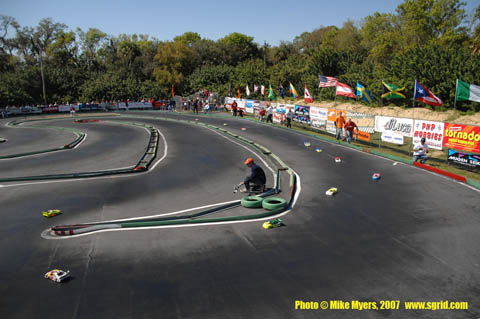
Start of the main final
(click to enlarge) |
|
|
|
| ⢠Part of the long term testing was of course testing the clutch system which is very crucial for the performance of the car where there are no compromises in terms of reliability. I was very satisfied with the precision running of the spur gears as well as their very high lifespan, but I was still not satisfied with the clutch system. After extensive research of all available materials in the market suitable for the clutch system, we purchased over a dozen different materials and then for several weeks did nothing else but test, analyze, and compare the different materials. Not only were the different materials tested but also different sizes of the whole clutch system. We tested 28/27/26/25mm clutch systems and it was interesting to notice the subtle differences, however small but still present, so it was also a bit difficult to find the best compromise. In the end we decided upon a 26mm diameter flywheel while for the clutch shoes we preferred the larger 27mm clutch shoes. With this non-typical configuration the clutch felt very smooth, while still being very easy to adjust, and of course having high reliability. The performance and reliability of the whole centrifugal-axial clutch system of course also depends on the other parts and materials used. Therefore it was obvious to us that we would need to test several different clutch springs to find the optimum one that would enable the clutch to engage properly. For all the parts which are stressed we decided we would settle for nothing less than premium Hudy Spring Steel™ material, while for less-stressed parts we used premium Swiss 7075 T6 to keep the weight down. All of the aluminum parts such as the flywheel, pinion gears, and others were all hardcoated using our new fully robotic hardcoating line; the hardcoating process is very difficult and sensitive to perform, but crucial for long lifespan of parts, so I was taking a âśno-compromiseâť approach and we applied an extra layer of the hardcoating to ensure the highest life. |
|
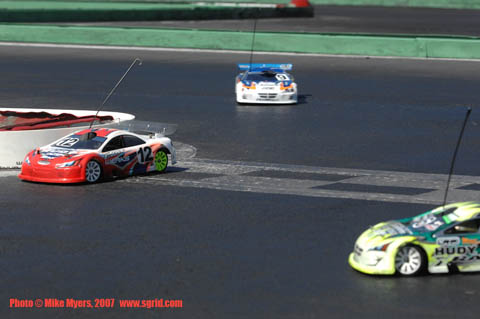
Martin Hudy worked the way from the back
(click to enlarge) |
|
|
|
| ⢠During long nights when I would re-analyze the whole day⦠all the results, data we collected, experiences and progress with all the different small parts and details⦠I realized at one point deep in the night that we never actually tested the fuel tank to see if the capacity was correct and within limitations. What a nightmare! I was trying to relax as I knew that in the computer during the fuel tank design phase, we designed the volume properly and with sufficient reserve, however at the same time I knew that composite parts are inscrutable and sizes and shapes change after parts cool down, so I was really nervous realizing that we were so far into the project. Unfortunately (or could I say âśfortunatelyâť), I realized this at the same time as when the first pre-production cars were being sent to the US team for the upcoming US Winternats warm-up race which was supposed to start the following day. Thanks to the time difference, I could relax knowing that even if the fuel tank were too large, the race hadnâ™t started yet so the tank could be modified⦠but at the same time I was really upset with myself for not thinking about this very important detail. Even with thousands of small details we had to focus on and work on, I was at least happy that even I remembered it and realized it just a day before the big race. As soon as the alarm clock buzzed I ran to the factory and checked the fuel tank⦠then faced a horrifying fact â“ the fuel tank was slightly larger than it should be. I immediately sent notification to the US team that they need to slightly modify the fuel tank to put it within limits before the race. And the consequence for the production? The mould had to go back again to the machine to be slightly reworked to reduce the volume, so more valuable time was lost. I am now sure that anytime in the future that we make a new fuel tank, the first thing will be to double check the size and capacity after the moulding process. |
|
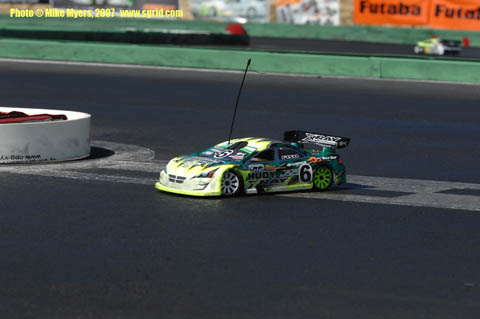
(click to enlarge) |
|
|
|
| ⢠After long-term tests and confirmation of all composite parts, our production could finally proceed to the final âśXRAY artâť stage â“ meaning that we put every single mould back to the production with a pile of comments, improvement suggestions and modification requirements for the final production. Normally where some other companies would just go right into production, we always return to all moulds and every single mould is again opened, put on the moulding machine, and all small details are improved and very precisely finished. With all the extra time spent on perfectly finishing all moulds, the production time drastically increases and many operations are precisely hand-done in the style of precision in which Swiss watches are crafted. However, I am so much focused on maximum perfection that I sacrifice the extra time and expenses spent but my heart stays with the passion for maximum precision of all parts, so that all end customers can enjoy building the car when all parts perfectly fit each other without need for modification or adjustment. There are simply too many details that are usually improved upon in the second stage when all the moulds are back to the machines that it would not be possible to describe them all, but I believe the customer building the car will enjoy all the small things and tricks that will make the assembly and working on the car so much more comfortable, enjoyable and easy. Only then will I feel completely satisfied knowing that the customer thinks of me in the good way. |
|
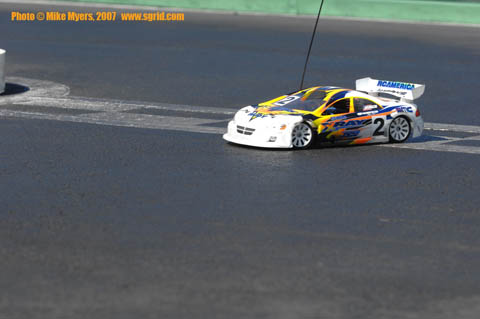
(click to enlarge) |
|
|
|
| The most stressful situation for every company is the release and debut of a new product. I was so protective and biased on my small âśchildâť that I was really stressed and nervous as never before when the dates in the calendar kept passing away. The last weeks and days before the deadline were very hectic and exhaustive as the official release (Nurnberg) and official racing debut were all scheduled after each other so we had to split our forces. Mario and the XRAY Support Team focused on the exhibition while Martin and I were fully focused on the upcoming first race, checking the last finishing work in production and assembly. I drove to Nurnberg at 3AM in the night to be available for the official release the next morning, and spent 3 days at the exhibition talking to the press, distributors, dealers, and the public. This was the more relaxing and enjoyable part. While the official release at the Nurnberg show was fabulous and the XRAY booth was the hottest place in the show, I knew that what would be even more important would be the debut at the upcoming race. After the three days I went home and left the next day to go to the USA. As the long term tests and the factory team driversâ™ testing sessions were extremely successful and positive, I felt confident but still nervous as to be at a large race with all the emotions and adrenaline in the air is a completely different environment than a private, relaxed practice. Fortunately (or unfortunately) the first race on schedule was nothing less than the famous huge US Winternats where all the factory teams are present and this is the kick-off to the new season. The next two weeks after the Nurnberg show were really painful for me. I was really concerned about the fact that due to all the improvements we had to make, the whole production delayed, we did not make the cars on time, and there was no chance now to get the cars to the drivers unless I brought them all on my own. This left us little choice but to package 8 cars out of the production run, still very hot like cakes, and bring them personally to the USA. The other concern was that our team has been mainly involved with electric racing and some of the drivers had very limited or even no experience with nitro touring racing at all. At a certain point I was asking myself whether or not this was going to be a disaster or whether we would get lucky and have a successful debut. I could not do anything else at this stage than to put all trust in every driver and to trust myself that the years of development and the months of testing the NT1 would result in a successful final product. |
|
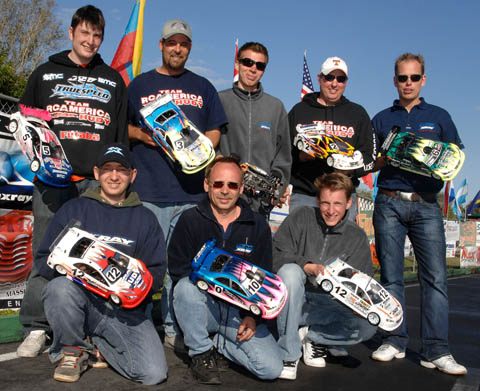
(click to enlarge) |
|
|
|
| The European team â” Martin Hudy, Jilles Groskamp, Teemu Leino, Martin Christensen, and myself â” joined our US team first at the annual US Snowbirds Nationals where our team with the T2â™007 dominated the race for the 4th year in a row and took home the winner trophies in all three main categories. Right after the final race we packed up all our stuff and went to the US Winternats track. Coming to the race we realized that other teams were already practicing for the entire week before. On Monday we had almost no practice due to wet track conditions, but we would use this day to finish building the cars. Even with no practice and a first-time-built car on the track, the forecast was anything but good⦠but as soon as the first qualifiers started, all the stress and worries went away as the NT1 was incredible fast. In only the second run, Ralph was able to set TQ and by the end of the qualifiers we had 7 of the NT1 cars in the top 20. Jilles, who had only 1 run when he finished the 5min race, qualified 3rd but was disqualified due to being underweight as a result of additional weights coming off the car. This reminded me that we would have to drill extra holes on the chassis to allow the weights to be mounted to the chassis like we do with the T2; I call the factory but unfortunately found out that all the chassis were already produced, so there was nothing we could do but to put the chassis back onto the CNC machines to drill additional holes to make sure that this unpleasant situation would not happen to any NT1 customers. Jilles started in the lowest final and he showed some of the worldâ™s most exciting racing â“ he won all the lower finals and was able to bump up to the main A final, however again, for the second time, got disqualified after winning the B final as his body was too low. However, the crowd and everybody at the race were simply shocked about Jillesâ™ performance but also amazed by the handling and reliability of the NT1. During all the final runs Jilles turned over 900 laps with no mistakes or failures, and after the entire race all the parts still looked like brand new. This was definitely for me the best showcasing and I was really satisfied and happy because it proved what I was convinced about â“ that the NT1 would be the most reliable and highest quality nitro touring with superior great handling. |
|
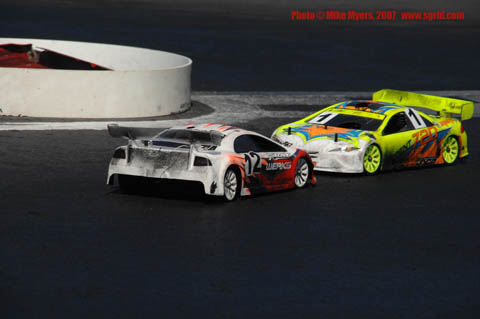
Martin Hudy face to face with Paolo
(click to enlarge) |
|
|
|
| With very good results and performances in qualifiers and lower finals I was really looking forward to the finals. However the final race is 45min long and this is where fate came to collect on our debt; we chose the wrong tire strategy. Either due to the fact that we had very limited experience and this was the first race for us, or that we had very limited practice while other teams had an extra week of practice where they could test tire strategies. Our decision to go with hard tires (and not have to swap them during the race) was a wrong decision. We knew that at the start we would be slower but what happened after the start was beyond our worst expectations â“ the track after the rain had even lower traction than expected, yet the tire wear increased! With the hard tires cars had much lower grip than expected and the cars were sliding and the drivers had to drive much more slowly than they normally would, while the other top drivers with soft tires were very fast from the start. As the race was progressing the traction did not improve and the gap of the leader was simply too big. More at the end of the race the fight was for 2nd and 3rd positions for Ralph Burch and Martin Hudy both with NT1. In the last few laps the tires were almost completely gone and the car very hard to control so Martin dropped to 4th position and in the last few corners in the last lap fell to 5th, while Ralph Burch in the last few laps lost his 2nd position and dropped to the final 3rd position. I was very sad because the team was doing so incredibly well the whole week and our wrong tire strategy contributed significantly to our not doing better, but still at the same time I was very happy that the car worked excellently during the whole week and we got all of the 8 NT1 cars in A and B finals, with 4 cars in the main final with Ralph taking a podium finish at the very first debut race. It was definitely an excellent result and great job by the entire team and some of the worldâ™s most spectacular and most successful debuts ever. |
|
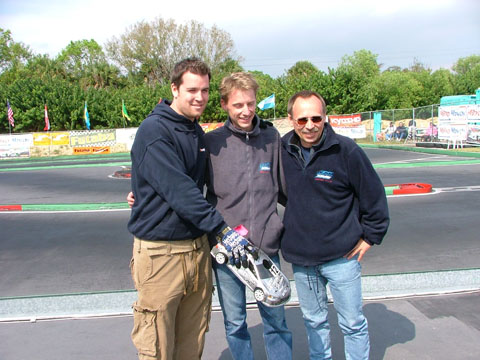
Juraj & Jilles
(click to enlarge) |
|
|
|
| With Jilles being the hero and the star of the race, I can modestly say that I was hero #2. As the senior racer I was able to drive and keep pace with all the young drivers and all the other factory team drivers. Everybody and especially myself were really shocked that I qualified in the B final leaving dozens of the worldâ™s top drivers and plenty of young factory team drivers behind. In the final I was able to keep pace with Jilles and Martin in the leading positions and finished on the B podium in 2nd overall. I was not only proud of the whole team and the NT1, but also with myself as well since these were definitely some of my best results and achievements. It showed that the NT1 could outperform the crowd not only in the hands of top drivers but also in the hands of regular âśmediumâť drivers like myself. Therefore if you read this column and either you are world champion, national champion, a regular fun racer, or even a beginner â“ you will have good times with the NT1. |
|

|
Enjoy the ride and â�til next timeâ¦
Dipl. Eng. Juraj Hudy
Chief Designer XRAY |
|























